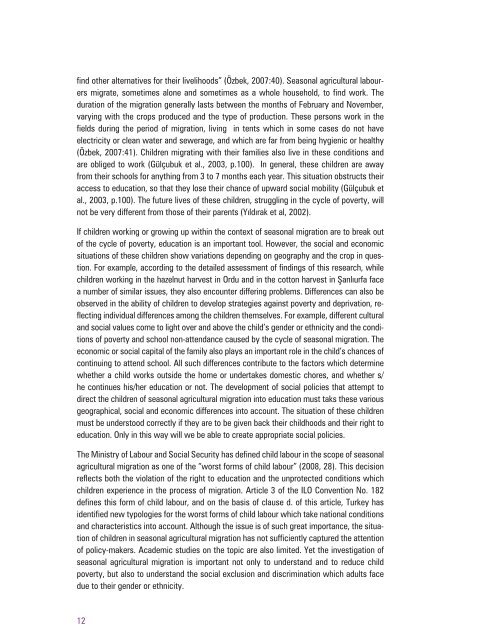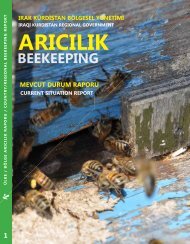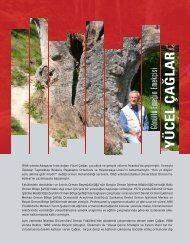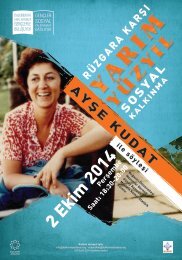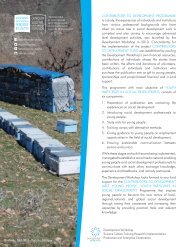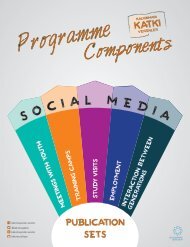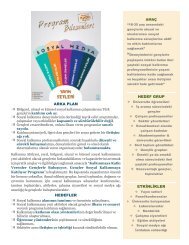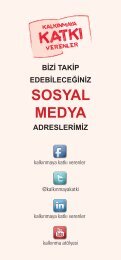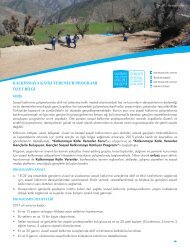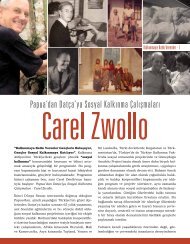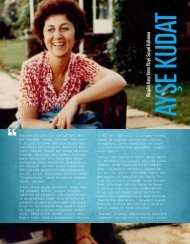Create successful ePaper yourself
Turn your PDF publications into a flip-book with our unique Google optimized e-Paper software.
find other alternatives for their livelihoods” (Özbek, 2007:40). Seasonal agricultural labourers<br />
migrate, sometimes alone and sometimes as a whole household, to find work. The<br />
duration of the migration generally lasts between the months of February and November,<br />
varying with the crops produced and the type of production. These persons work in the<br />
fields during the period of migration, living in tents which in some cases do not have<br />
electricity or clean water and sewerage, and which are far from being hygienic or healthy<br />
(Özbek, 2007:41). Children migrating with their families also live in these conditions and<br />
are obliged to work (Gülçubuk et al., 2003, p.100). In general, these children are away<br />
from their schools for anything from 3 to 7 months each year. This situation obstructs their<br />
access to education, so that they lose their chance of upward social mobility (Gülçubuk et<br />
al., 2003, p.100). The future lives of these children, struggling in the cycle of poverty, will<br />
not be very different from those of their parents (Yıldırak et al, 2002).<br />
If children working or growing up within the context of seasonal migration are to break out<br />
of the cycle of poverty, education is an important tool. However, the social and economic<br />
situations of these children show variations depending on geography and the crop in question.<br />
For example, according to the detailed assessment of findings of this research, while<br />
children working in the hazelnut harvest in Ordu and in the cotton harvest in Şanlıurfa face<br />
a number of similar issues, they also encounter differing problems. Differences can also be<br />
observed in the ability of children to develop strategies against poverty and deprivation, reflecting<br />
individual differences among the children themselves. For example, different cultural<br />
and social values come to light over and above the child’s gender or ethnicity and the conditions<br />
of poverty and school non-attendance caused by the cycle of seasonal migration. The<br />
economic or social capital of the family also plays an important role in the child’s chances of<br />
continuing to attend school. All such differences contribute to the factors which determine<br />
whether a child works outside the home or undertakes domestic chores, and whether s/<br />
he continues his/her education or not. The development of social policies that attempt to<br />
direct the children of seasonal agricultural migration into education must taks these various<br />
geographical, social and economic differences into account. The situation of these children<br />
must be understood correctly if they are to be given back their childhoods and their right to<br />
education. Only in this way will we be able to create appropriate social policies.<br />
The Ministry of Labour and Social Security has defined child labour in the scope of seasonal<br />
agricultural migration as one of the “worst forms of child labour” (2008, 28). This decision<br />
reflects both the violation of the right to education and the unprotected conditions which<br />
children experience in the process of migration. Article 3 of the ILO Convention No. 182<br />
defines this form of child labour, and on the basis of clause d. of this article, Turkey has<br />
identified new typologies for the worst forms of child labour which take national conditions<br />
and characteristics into account. Although the issue is of such great importance, the situation<br />
of children in seasonal agricultural migration has not sufficiently captured the attention<br />
of policy-makers. Academic studies on the topic are also limited. Yet the investigation of<br />
seasonal agricultural migration is important not only to understand and to reduce child<br />
poverty, but also to understand the social exclusion and discrimination which adults face<br />
due to their gender or ethnicity.<br />
12


